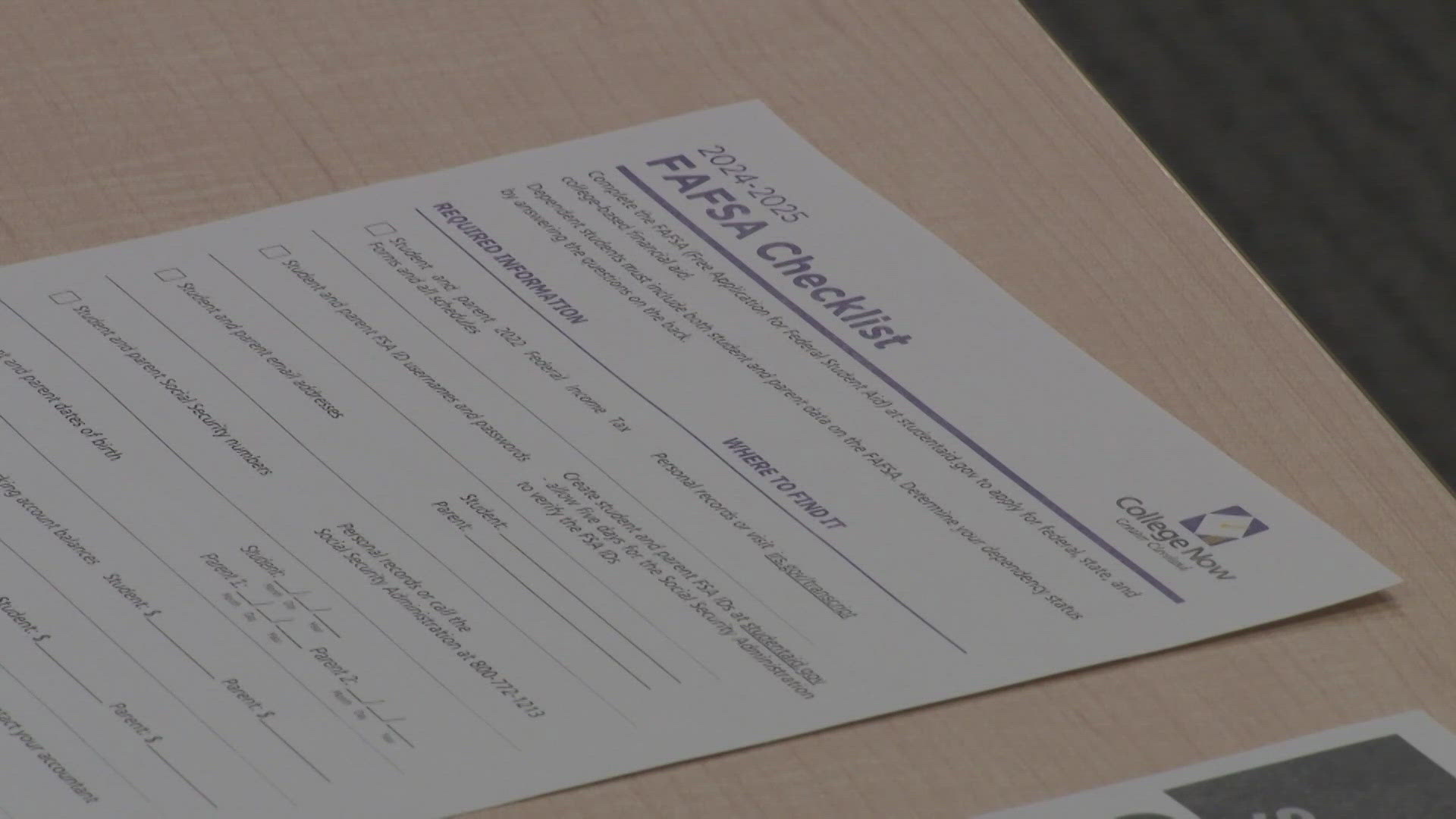OHIO, USA — Wednesday, May 1 should have been the decision deadline for millions of students across the country to select which college they will attend this fall. However, setbacks and delays with the rollout of the new Free Application for Federal Student Aid, also known as FAFSA, pushed back commitment dates.
“We're right around this normal timeline of May 1st being the college decision day and there are many families out there who are still waiting on financial aid offers who are in a holding pattern to make a college decision,” says Carolyn Noll Sorg, vice president for enrollment management at John Carroll University.
Earlier this year, JCU was featured in the New York Times for issuing financial aid estimates and agreeing to honor them, before getting official government FAFSA data.
“It was a bit of a calculated risk on the part of John Carroll to say we're going to work with preliminary information to put together this estimate that we want you to feel confident using to make a college decision,” Noll Sorg adds. “When we got the official financial aid data there were some anomalies … but by and large we were right on track with what most of our estimates were showing.”
She says of the 3,700 students admitted to JCU, about 500 took advantage of getting early financial aid estimates. According to Noll Sorg, less than 10 of those estimates were completely wrong once John Carroll received official FAFSA information.
In a Wednesday call providing progress updates on the 2024-25 FAFSA implementation, U.S. Under Secretary of Education James Kvaal reported that the government has processed more than 8.3 million new FAFSA forms to date.
“It's been a challenging year for the FAFSA but I'm really proud of the progress that we have made in recent weeks,” Kvaal shares.
He says students who complete a FAFSA today can expect their records to be sent to colleges within one to three days. This promise comes after many schools received the first batch of FAFSA information in March, not January, because the department made changes to their calculations to accommodate inflation.
DEPOSIT DEADLINES PUSHED BACK
3News reached out to a dozen local colleges and universities about how the FAFSA delays have impacted them. Of those that responded, more than half have pushed back their deposit deadlines due to FAFSA setbacks and delays.
Steve McKellips, the vice provost for enrollment management at the University of Akron, says the school began distributing aid packages this week.
“I’m very excited to finally say that our packages are heading out to families” McKellips writes in an email to 3News. “Also, we extended our confirmation deadline for students to notify us of their decision to June 1 from the original May 1 date.”
Kent State University and Ashland University also extended their deposit deadlines to June 1. Additionally, Cleveland State University is encouraging students to “deposit by June 1st if they are not ready to make their college choice by the traditional national college decision day of May 1.”
Baldwin Wallace University has extended its priority deposit deadline to June 15.
FAFSA DELAYS POTENTIAL IMPACT ON COLLEGE ENROLLMENT
“My biggest worry as someone in higher education, as a higher education leader is how this delay will impact our lowest income families who we hope will choose to go to college this year,” Noll Sorg says. “There’s been a lot of speculations that perhaps families will sit this one out.”
According to a new survey by U.S. News & World Report, 42% of parents questioned say their child was forced to defer college enrollment by at least a semester because of the FAFSA delay, with 41% of parents saying their college-bound children hadn’t filled out the FAFSA by late April.
“The goal behind the new FAFSA was to make it easier for families to apply for aid, but the challenges in the rollout certainly did more harm than good for those families most in need,” writes Keith Ramsdell, vice president for enrollment management at Ashland University.
The Human Capital Research Corporation reports in their FAFSA tracker that FAFSA form filings are down 23% nationally and down 16% in Ohio.
“If 16 percent fewer students file FAFSA this year when all is said and done, it could mean more than 10,000 Ohio students who would usually attend college decide not to attend college this fall,” Scott Andrew Schulz, the vice president for enrollment management for Baldwin Wallace University writes in an email to 3News. “That would not only adversely impact the future job prospects of thousands of Ohioans but also have long-term economic repercussions for our state.”

